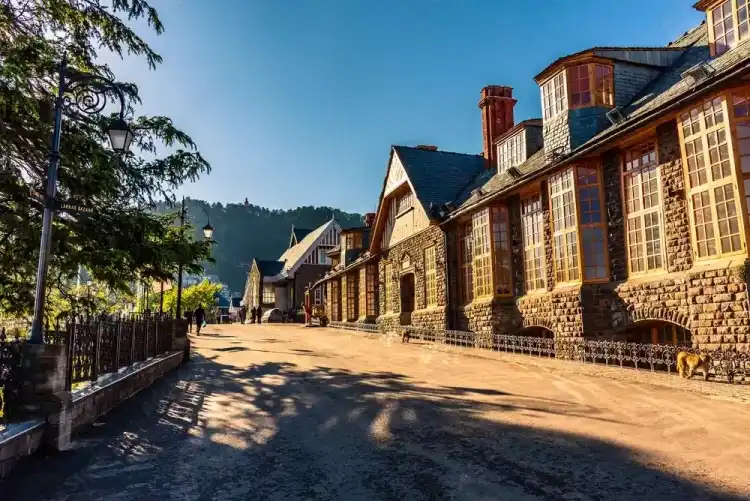Discovering Shimla: A Comprehensive Guide
Shimla, often referred to as the "Queen of Hills," is a district in the Indian state of Himachal Pradesh. It is renowned for its picturesque landscapes, pleasant climate, and rich cultural heritage. This guide will provide an in-depth look at Shimla, covering its demography, culture, geography, cuisines, history, notable figures, and administration.
Demography of Shimla
Shimla is home to a diverse population, with a mix of ethnic groups and cultures. According to the latest census, the district has a population of approximately 813,384 people. The majority of the population comprises Hindus, followed by Muslims, Sikhs, and Christians. The literacy rate in Shimla is notably high, with a significant percentage of the population being educated.
Population Distribution
- Urban population: Concentrated mainly in Shimla city and surrounding suburbs.
- Rural population: Scattered across numerous villages and small towns within the district.
Cultural Heritage
Shimla's culture is a vibrant blend of traditional Himachali customs and colonial influences. The region is known for its traditional music, dance, and festivals.
Traditional Music and Dance
- Nati: A traditional dance form of Himachal Pradesh, performed during festivals and special occasions.
- Kulluvi Nati: A variant of Nati, popular in the Kullu Valley region.
Festivals
- Shimla Summer Festival: An annual event showcasing local culture, music, and cuisine.
- Diwali: The festival of lights, celebrated with great enthusiasm.
- Dussehra: Marked by dramatic enactments of the Ramayana, culminating in the burning of effigies of Ravana.
Geography of Shimla
Shimla is situated in the north-western Himalayas at an average altitude of 2,205 meters (7,234 feet). The district spans an area of 5,131 square kilometers, characterized by its rugged terrain, dense forests, and scenic valleys.
Major Landmarks
- Jakhoo Hill: The highest peak in Shimla, offering panoramic views of the city.
- The Ridge: A large open space in the heart of Shimla, often used for public events and celebrations.
- Christ Church: One of the oldest churches in North India, known for its neo-Gothic architecture.
Climate
Shimla experiences a subtropical highland climate with cool winters and moderate summers. Snowfall is common during the winter months, attracting tourists seeking a winter wonderland experience.
Cuisines of Shimla
Shimla offers a rich culinary experience with a blend of traditional Himachali dishes and influences from Tibetan and Punjabi cuisines.
Traditional Dishes
- Chana Madra: A yogurt-based chickpea curry, often served with rice.
- Dham: A festive meal comprising rice, lentils, and a variety of curries, typically served on special occasions.
- Siddu: A steamed bread made from wheat flour, usually served with ghee or chutney.
Popular Eateries
- Café Simla Times: Known for its cozy ambiance and delicious continental food.
- The Devicos: Offers a range of Indian and Chinese dishes, popular among locals and tourists alike.
Historical Significance
Shimla has a rich historical background, having served as the summer capital of British India from 1864 to 1947. This period left a lasting impact on the architecture and urban design of the city.
Colonial Architecture
- Viceregal Lodge: A grand building that once served as the residence of the British Viceroy of India, now a museum and research center.
- Gaiety Theatre: An iconic building known for its Victorian architecture and cultural performances.
Historical Events
- Shimla Agreement: A significant peace treaty signed between India and Pakistan in 1972, aimed at resolving the conflict arising from the Indo-Pakistani War of 1971.
Notable Figures from Shimla
Shimla has been home to several notable personalities who have contributed significantly to various fields.
Prominent Authors and Poets
- Rudyard Kipling: The famous British author spent part of his childhood in Shimla, which influenced some of his works.
- Nirmal Verma: A renowned Hindi novelist and short story writer, known for his literary contributions.
Administration and Governance
Shimla district is administratively divided into several subdivisions and tehsils, each governed by local administrative bodies.
Administrative Structure
- Deputy Commissioner: The chief administrative officer responsible for the overall governance of the district.
- Municipal Corporation: Governs the urban areas of Shimla, responsible for civic amenities and infrastructure development.
Key Initiatives
- Smart City Project: Aims to enhance the infrastructure and livability of Shimla through various development projects.
- Tourism Promotion: Efforts to boost tourism by improving facilities and promoting Shimla as a year-round destination.
Suggested Diagram: Administrative Structure of Shimla
Conclusion
Shimla, with its rich cultural heritage, stunning landscapes, and historical significance, is a district that offers a unique blend of tradition and modernity. From its traditional festivals and cuisines to its colonial architecture and administrative prowess, Shimla continues to captivate and charm visitors from around the world. Whether you are drawn by its scenic beauty or its cultural richness, Shimla is a destination that promises an unforgettable experience.
